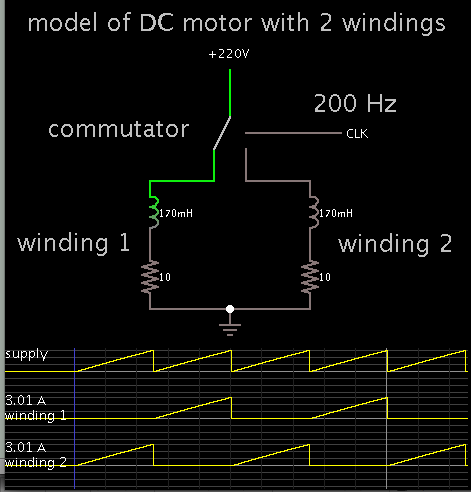chinuhark
Member level 5

I am making a hysteresis current controller for a DC Motor for which I need it's inductance and resistance. It's specifications are:
220V(Armature), 4A(Armature), 0.75kW/1HP, 1500RPM.
I measure Resistance = 10.6 Ohms using a multimeter and applied AC voltage to the armature using a dimmer and used following relations:
Z = V/I
X = Root(Z^2-R^2 ) where R is ac Resistance = 1.6 times 10.6Ohms
L = X/(2*Pi*f )
I am getting Ra = 10.6Ohms and La = 170mH.
Aren't these values a bit too high or are they OK?
220V(Armature), 4A(Armature), 0.75kW/1HP, 1500RPM.
I measure Resistance = 10.6 Ohms using a multimeter and applied AC voltage to the armature using a dimmer and used following relations:
Z = V/I
X = Root(Z^2-R^2 ) where R is ac Resistance = 1.6 times 10.6Ohms
L = X/(2*Pi*f )
I am getting Ra = 10.6Ohms and La = 170mH.
Aren't these values a bit too high or are they OK?




